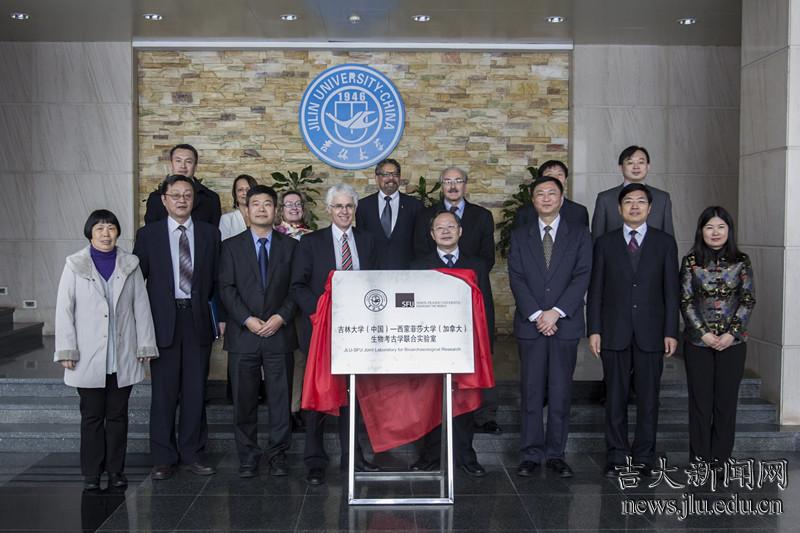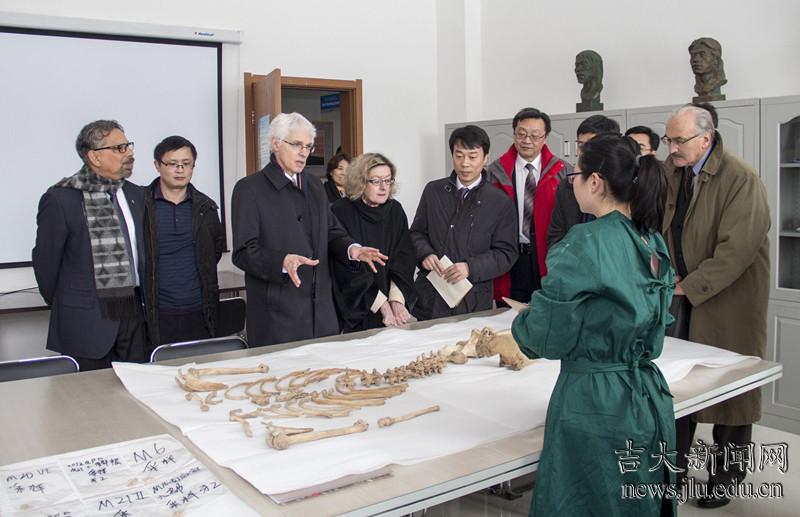From August 25th to 30th, 2010, Zhan Tao, the former President of Jilin University Professor led a delegation to Edmonton, Canada to participate in the "China-Canada Academic Forum". After the forum, he visited Simon Fraser University (SFU) in Canada. During his visit, President Zhan Tao and Professor Andrew Petter, who was newly appointed as the President of Simon Fraser University, discussed the scientific research cooperation between the two universities in the fields of archaeology, chemistry, engineering, medicine, and Chinese studies, as well as high-level postgraduate joint training. Extensive and in-depth discussions were held on the expansion of student exchanges and the construction of Confucius classrooms, and a series of consensuses were reached. The cooperation and exchanges between Jilin University and Simon Fraser University in the field of archaeology have a history of nearly ten years, especially bioarchaeology. Both sides expressed the hope that the two universities can have greater cooperation and make breakthrough progress in archaeology.
In March 2011, Vice President Wu Zhenwu led a delegation from Jilin University to visit Simon Fraser University in Canada, and signed a joint labotatory memo with the president of Simon Fraser University, Professor Andrew Petter, in the fields of physical anthropology and molecular archaeology in the traditional advantages of archaeology disciplines of the two universities. In February 2013, Executive Vice President Zhao Ji led a delegation to visit Simon Fraser University in Canada. During the visit, the delegation was warmly received by B.Mario Pinto, Vice President of the university. In-depth discussions were conducted on the re-signing of the framework agreement between the two universities, including further promoting the establishment of the Sino-Canada “Bioarchaeology” joint laboratory, the exchange of high-level delegations, and the joint training of students, etc. They reached a consensus for further cooperation in the future.
On November 18, 2013, the inauguration ceremony of the Joint Laboratory of Bioarchaeology of Jilin University and Simon Fraser University was held on the central campus of Jilin University. Director of the Council of Jilin University Chen Dewen, Vice President Wu Zhenwu, President of Simon Fraser University Andrew Petter, Vice President of Scientific Research Mario Pinto, Director of the Frontier Archaeology Research Center Zhu Hong, Professor of Archaeology Department of Simon Fraser University and Kuang Yaming Chair Professor of Jilin University Yang Dongya and others attended the unveiling ceremony.

The purpose of the Joint Laboratory is to establish a bioarchaeology research center with broad scientific research prospects. The laboratory looks forward to building a training base for bioarchaeologists in China and Canada with international advanced level, and to carry out original innovations research in this field, promoting the overall development of physical anthropology and molecular archaeology in the world, and the extensive cooperation between China and Canada in the field of archaeology.

The Joint Laboratory of Bioarchaeology of Simon Fraser University of Jilin University takes the bones, teeth, hair, organ tissues and plant remain of various biological remains unearthed from archaeological excavations as research objects. Bioarchaeologists takes the comprehensive application of modern natural science methods as technical support and scientific research innovation, with physical anthropology and molecular archaeology as the main research directions. The main feature of research is the intersection of natural sciences and social sciences, and the main research content of frontier academic issues at home and abroad and major national needs. The laboratory's main research goal is to obtain independent primary innovation results, and it implements an "open, mobile, cooperative, and competitive" operating mechanism to provide an environment suitable for research.